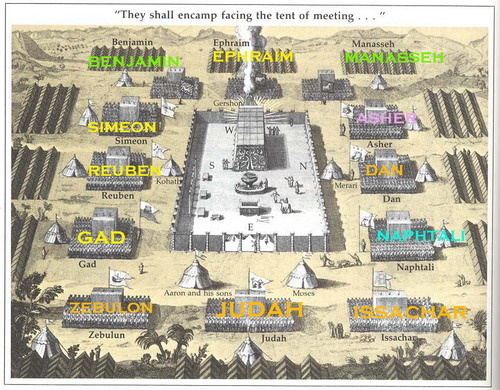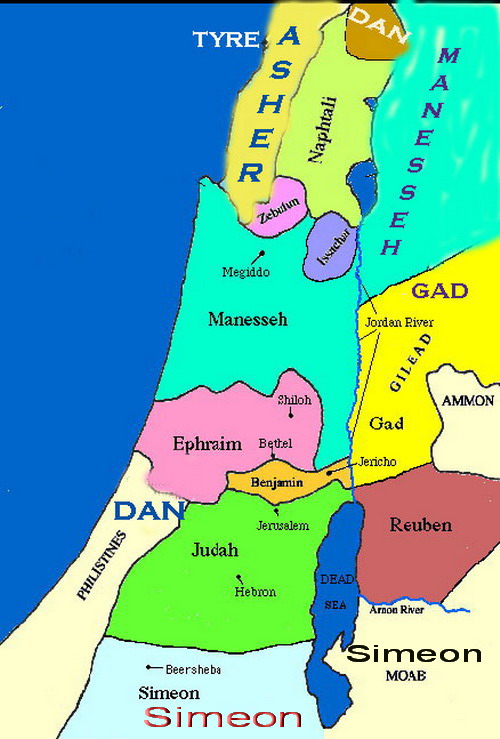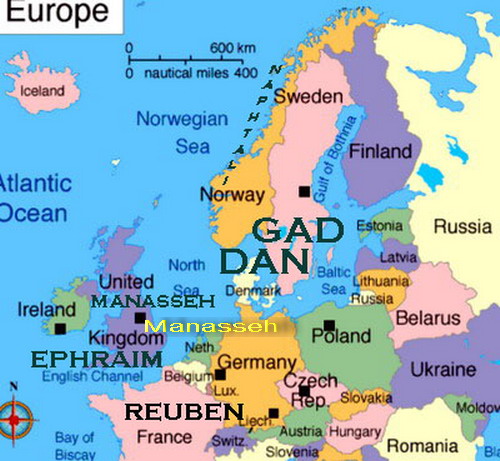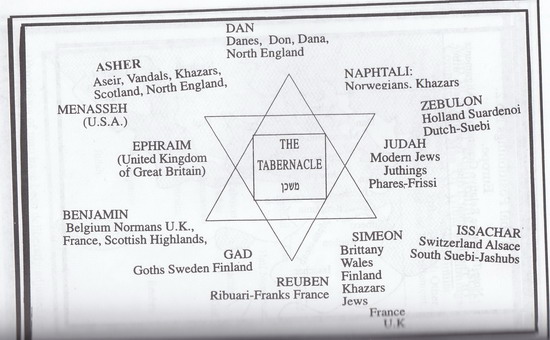|
Israelite Tribes encamped around the Tabernacle in the Wilderness |
| Israelite Tribes in their Tribal Inheritances in the Land of Israel. Illustrated Emplacements are only approximations. |
| Israelite Nations in Europe. |
| The Tabernacle Encampment Alignments compared with modern nations identified as belonging to the Tribes in question. |
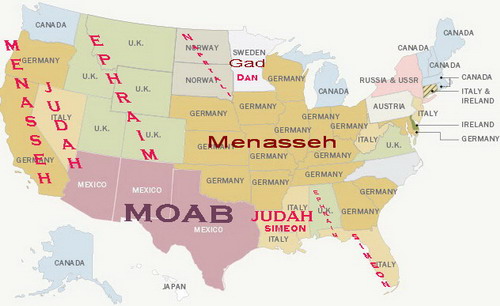 |
| The USA in 1910 showing the countries of origin of most new immigrants at that time. Source of Map: From Germany to Mexico: How America’s source of immigrants has changed over a century Compare identifications on map to those in the Land of Israel, etc. Mexico we suggest is Moab via its Spanish stock amongst whom were also some Israelites and Jews. The English are Ephraim. The German immigrants to the USA were of different stock from that of Germans who remained in Germany. We identify these German immigrants to the USA as Manasseh. Similarly the Italians of Italy are mostly non-Israelites but many Hebrews and descendants of Jews were amongst them. A good portion of these may have migrated to America, as happened in similar cases. Amongst the Italians we had found elements from Judah and Simeon and other Tribes. In the north central USA we find many immigrants from Sweden and Norway. These may well have belonged to the Israelite Tribes of Gad, Naphtali, and Dan. These tribal identifications are explained in our work, The Tribes. THE ISRAELITE ORIGINS OF WESTERN PEOPLES. The suggestions concerning the USA are no more than initial ideas. A closer examination of the different immigrant groups, where they mostly came from, etc, may well yield more exact results. |
|
See Also: The Order of Encampment in the Wilderness, and its Historical Significance. Parallelisms & Similarities |
